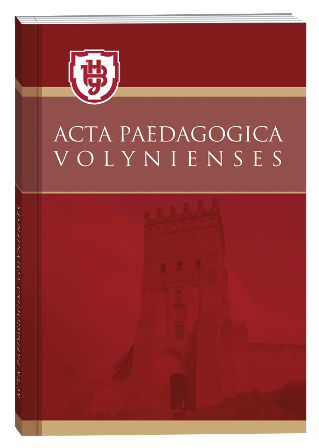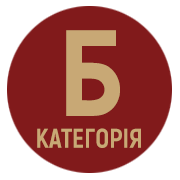THE DEVELOPMENT OF CRITICAL THINKING AS A KEY COMPONENT OF PROFESSINAL JOURNALISTS’ TRAINING IN THE US UNIVERSITIES
DOI:
https://doi.org/10.32782/apv/2023.2.18Keywords:
journalists, professional training, USA, critical thinking, communication, professional activityAbstract
It has been proven that the formation of critical thinking plays an important role in the process of professional journalists’ training in the US universities. The article emphasizes that providing the skills of critical analysis and evaluation of information is becoming necessary in media platforms. It has been investigated that critical thinking has several key aspects in journalism. First, it is the ability to analyze sources of information and determine their reliability and validity. Journalists must be able to distinguish fact from conjecture, understand potential conflicts of interest and watch for biases in presenting information. Second, critical thinking includes the ability to analyze and evaluate an argument. Journalists must be able to understand what evidence supports this or that statement, what logical fallacies may be present, and what may be the hidden motives of the participants in the discussion. It has been analyzed that requirements for modern journalists are becoming more and more complex. It is substantiated that the formation of critical thinking is a necessary guarantee for a successful career in the field of journalism, namely helps journalism students to analyze and evaluate information from various sources, carry out a thorough analysis of events, facts and sources of information without bias, defend their point of view and respond to informational provocations, recognize stereotypes and manipulative methods, which is considered to be important in the era of wide access to information. It is argued that critical thinking develops the skills of critical analysis of social problems, which are necessary for quality journalistic production. Journalism students who possess critical skills are able to determine the veracity and reliability of information, verify its sources, and analyze the context in detail. This contributes to a balanced and objective coverage of events and the development of conscious citizenship. On the basis of the conducted research, it has been concluded that US universities, providing training in critical thinking, form the future generation of journalists who will be able to perform their professional activities by analyzing social, economic and political problems.
References
Багай Б. М. Інноваційні педагогічні технології у сучасній школі, 2016. 11 с.
Баханов К. О. Професійний довідник вчителя історії. Харків : Основа, 2011. 239 с.
Ліпман М. Чим може бути критичне мислення? Освітня платформа «Критичне мислення». Взято з: http://www.criticalthinking.expert/materiali-dlya samoosviti/eksperti-radyat-pochitati/
Методичний бюлетень на тему: «Розвиток критичного мислення», 2017. Взято з: http://cnttum.ks.ua/asdasdasdsssa.htm
Онкович Г. В. Нові вектори розвитку сучасної медіаосвіти. Журналістика. Філологія. Медіаосвіта : зб. наук. праць всеукраїнської науково-практичної конференції. Полтава, 2014. С. 150–156.
Писаренко Л. М. Медіаграмотність як ефективний метод розвитку особистості. International scientific and practical conference «The European development trends in journalism, PR, media and communication» : conference proceedings, February 26–27, 2021.180 с.
Пометун О. І. Як розвивати критичне мислення в учнів (з прикладом уроку), 2017. Взято з: https://nus.org.ua/articles/krytychne-myslennya-2/
Рахімов А. Формування творчого мислення школярів в процесі навчальної діяльності. Київ : АССА, 2016. 167 с.
Харченко Н. В. Розвиток критичного мислення. Інноваційні форми роботи для дітей і дорослих. Київ : «Видавнича група «Шкільний світ», 2018. 120 с.
Clark R. P. The pyramid of journalism competence: what journalists need to know, 2014. Retrieved from: https://www.poynter.org/reporting-editing/2014/the-pyramid-of-journalism-competence-what-journalists-need-to-know/
Lipman M. Critical thinking: What can it be? Institute of Critical Thinking. Resource Publication, 1988. Series 1. № 1. 12 p.







